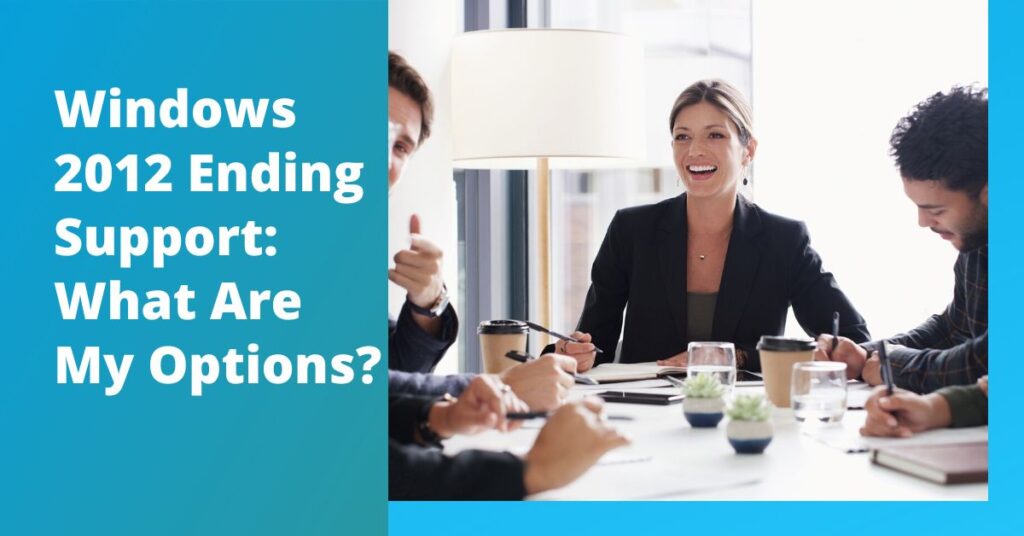
Microsoft recently announced that Windows 2012 is nearing the end of its support cycle. So, what does this mean for you from a business perspective? Is it time for cloud migration? What about cloud computing services?
Here’s the full message from Microsoft: “Windows Server 2012 and Windows Server 2012 R2 will end on October 10, 2023. After this date, these products will no longer receive security updates, non-security updates, bug fixes, technical support, or online technical content updates.”
We asked Jairo Avila, our senior client manager at Internos, to explain the options available for businesses, including cloud migration and cloud computing services, and how to stay ahead of the technology curve.
What’s going on with Windows 2012? What does the situation look like?
Javier: “After October 10, 2023, these products will no longer receive security updates, non-security updates and so on. How you address the concerns is dependent on your business’s current state, its architecture and infrastructure.”
Will Microsoft completely drop the OS?
“This announcement doesn’t mean that Microsoft wouldn’t release something to fix a vulnerability that’s deeply rooted and at the core of all operating systems. Generally, it means they’re no longer in a timeframe where they support the operating system.”
What does this look like for businesses with legacy applications?
“Clients might have concerns not just about the cost of cloud computing, but about the migration itself. If legacy systems are too vital to productivity and too costly to migrate because of their complexity, there are avenues to be explored. We can lift these systems into Microsoft’s Azure cloud and Microsoft can cover them and extend their life.
“Microsoft will support migrating applications and databases to Azure Virtual Machines and receive free extended security updates for three years after the end of support, or October of 2026.”
What should businesses currently using Windows 2012 consider?”
“Businesses have to decide if they want to maintain their security, and what options they have based on their infrastructure. Is it something as simple as implementing an in-place upgrade to a server? What if your environment has multiple servers? Three servers? Four? Ten or 15? There is no black-and-white solution because it’s all based on circumstances.”
What if a business using Windows 12 takes no action?
“Unfortunately, that business now has something that over time can become more and more susceptible to cyberattacks. If the operating system has a vulnerability, Microsoft isn’t patching it anymore. If that’s the case, a business has to consider extra protections in its existing environment. They should be separated with extra layers of security so they’re not as accessible to the internet or other systems within the larger environment. The business should elevate access control so that only those team members who specifically need access to the system are going to have access, compared to previous situations where anyone had access.”
What if I want to explore cloud migration?
“You can test the waters by investing in on-premises servers and entering a hybrid environment. You take on-premises servers and lift them into the Microsoft Azure cloud. If you move to the cloud, your system can now be protected by Microsoft. It’ll extend the life of those systems to October of 2026.”
What if I upgrade my operating system?
“Your systems can be upgraded to a more permanent, updated version. It could be Windows 2016, 2019 or 2022, but I think a better conversation would be about bringing you into a more secure, maintained operating system. It doesn’t have to be the latest operating system, it depends on the compatibility and support of whatever business applications are in place.”
Of the three options, what would you recommend?
“There is no clear recommendation, it depends on the infrastructure and environment of your business. When you move from on-premise into the cloud, it is a complete shift in how you run your infrastructure and a shift in the operating costs of running your business in the cloud. Cloud migration positively affects businesses that want to affect resiliency and are in hybrid working environments.
“If you want your servers on-premise, be able to see them, touch them, that requires a project to be scoped out. It would be simple if it were just a technical decision. The reality is the ‘people, process’ part of ‘people, process, technology’ is a core part of every business. To help make decisions, we have to ask what the business does, and who is the business for?”
Next Steps in Cloud Migration
Have you avoided or delayed looking at cloud migration for Windows 2012 because of the complexity or difficulty of the situation?
It doesn’t have to be complex or difficult.
Discover a tailored solution to your business needs. Contact us or book a meeting with one of our experts to find a successful solution that works for your business.
Use our Managed Service Provider Checklist to Find the Right
Our easy-to-follow checklist can guide you through the process of the best IT services provider for your business.
Are you a first-timer to IT support? Maybe you aren’t happy with your current MSP? This checklist will help you outline and define:
